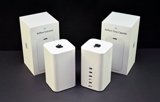Thunderbolt has never seen a great deal of market penetration, but that may be about to change with Intel natively integrating Thunderbolt 3 into future CPU models and making the protocol royalty-free to chipmakers in 2018.

"We think the first thing is going to drive broader adoption and deployment of Thunderbolt 3 in PCs," said Intel's lead for Thunderbolt development Jason Ziller in an interview with Wired . "The second will drive also broader adoption in the ecosystem, with a lot of different peripherals and other devices."
Ziller noted that cost of peripherals, with six-foot, active, full-speed cables topping $60, has been a problem for adoption. The moves by Intel for wider adoption should drive down costs both from a reduction in licensing costs needed to build the devices in the first place, as well as from a mass-production "economy of scale" standpoint.
"Cost is always a consideration, I think the integration into future CPUs will help reduce the overall solution cost on the computer," said Ziller. "And, we're continually working with the industry to lower the cost of the cables and the devices."
"There always have been and probably will continue to be some wired ports on even the thinnest and lightest computers," added Ziller. "So having a single port that really do everything that you need is our vision for Thunderbolt 3."
The modern Thunderbolt connector was developed by a consortium of companies, including Apple and Intel, as "Light Peak." Thunderbolt is in many ways is more like Apple and Texas Instruments' legacy FireWire connector than USB.
Apple is on-board with the decision to make the protocol royalty free.
"Apple and Intel have collaborated on Thunderbolt from the beginning," said Apple's Senior Vice President of Hardware Engineering Dan Riccio in a statement. "As the industry leader in its adoption, we applaud Intel's efforts to integrate Thunderbolt technology into its CPUs and open it up to the rest of the industry."
The latest incarnation, Thunderbolt 3 was included on Apple hardware for the first time on the 2016 MacBook Pro, and uses the USB-C physical connector and has two discrete speeds. Using "active" cables, or cables with transceiver chips embedded in them for negotiation, peak speeds can reach 40 gigabits per second when supplied with sufficient PCI-E channels. Thunderbolt 3 can also use "passive" cables without transceivers, cutting the downstream speed to one channel at 10 gigabits per second.
Thunderbolt 3 was originally supposed to have been integrated with the Kaby Lake processor family, but plans changed somewhere along the way. It is not yet clear which processor revision Intel will include support for Thunderbolt 3.


